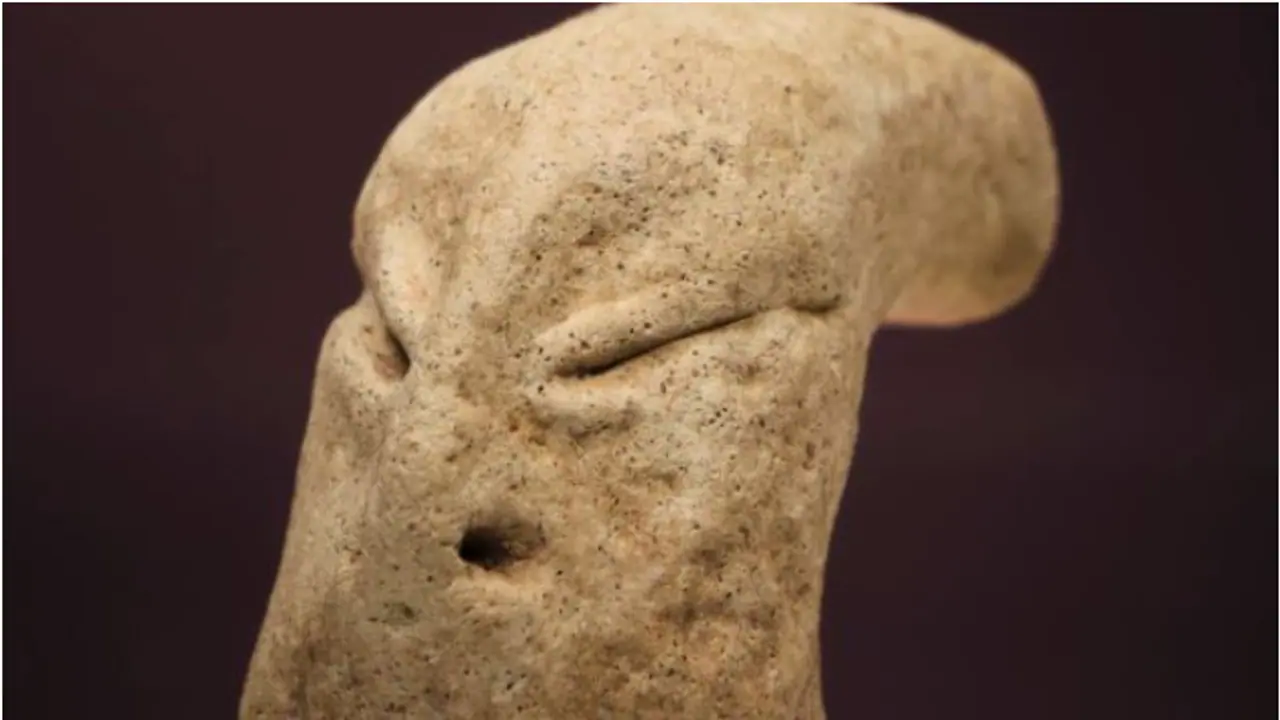A 7,500-year-old sculpture resembling a 'snake-man' has been unearthed in Kuwait's Al-Subiyah desert. This discovery, reminiscent of Ubaid culture artifacts, sheds light on the rituals and beliefs of that era, predating even the Sumerians.
A 7,500-year-old unique sculpture has been discovered in Kuwait's Al-Subiyah desert. Featuring an elongated head, flat nose, narrow eyes, and no mouth, the sculpture resembles the 'snake-man' sculptures of the Ubaid culture. It offers insights into the rituals and beliefs of a civilization that predates even the Sumerians.

The sculpture was unearthed during excavations near Kuwait City, conducted by a team of Kuwait-Polish archaeologists exploring the Al-Subiyah desert in northern Kuwait. The history behind this artefact is intriguing.
Google’s new Willow Quantum Chip solves problem in 5 mins, surpassing supercomputers by 10 septillion years
The sculpture represents the culture of ancient people who inhabited the region between 5500 and 4900 BC. This small sculpture, with its elongated skull, flat nose, and narrow eyes, lacks a mouth. It is another example of the 'snake-man' sculpture found in the Ubaid culture, and it is estimated to be 7,500 years old.
According to Science Alert, this unique sculpture, discovered at the Bahra 1 site, is considered key evidence of the Ubaid rituals and beliefs prevalent in West Asia.
Following the discovery, several questions have arisen about the sculpture's purpose. Researchers are curious about why it was created and whether it represents any symbolic meaning. Archaeologist Piotr Bielinski, in a recent press release, suggested that the sculpture could symbolize the ancient people's rituals and values. The report highlights that the Ubaid people laid many foundations for civilization even before the Sumerians, who are often considered humanity's earliest civilization.
Explained: What Assad's fall in Syria means for India's geopolitical interests
Significant discoveries, such as trade networks, irrigation systems, and temples, are being made in present-day Iraq and Kuwait. More information about this culture is becoming available through the unique pottery types and other artefacts found in the region. Since 2009, the Bahra 1 area, known for its early Ubaid period, has attracted attention for its distinctive archaeological features. The area is also home to structures called 'Cultic Buildings' and unusual architecture from this period.
Reports indicate that the Ubaid culture predates the Sumerians. Although the Ubaid people left no written records, much information about their culture has been derived from the physical remains of the time. It is believed that the Ubaid people were the first to establish agriculture, trade, and early forms of civilization in this region. The Ubaid culture is thought to have laid the foundation for the later Mesopotamian civilization.
